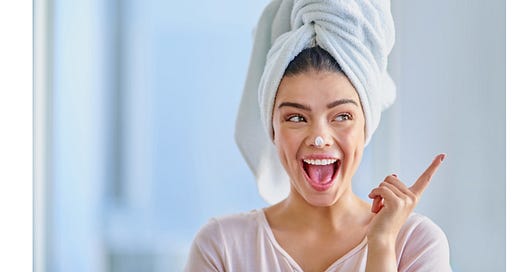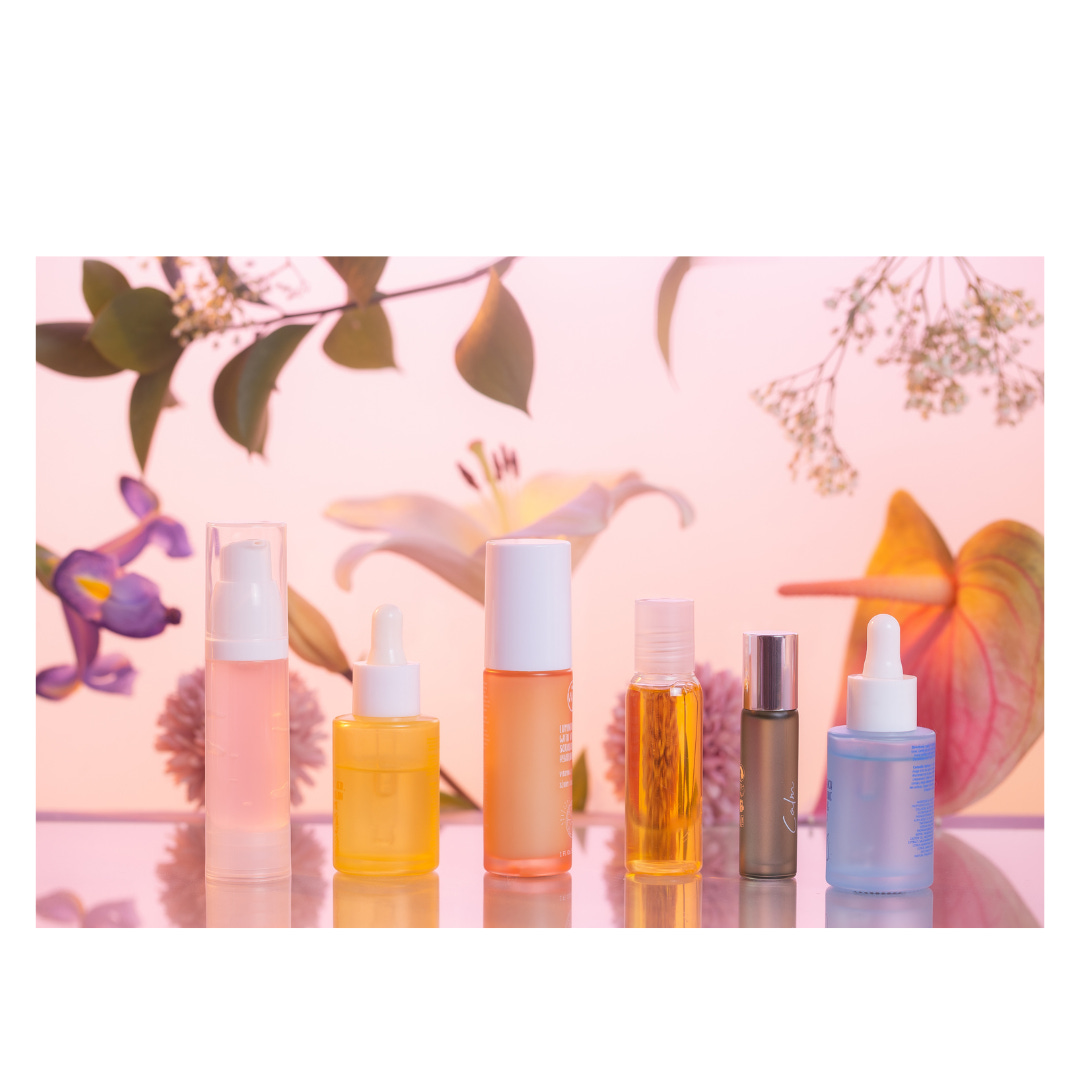Hello again LAKers,
We hope you've enjoyed our weekly in-depth look at Korea's culture so far. In this issue of the LAK newsletter, we'll be diving deep into the land of Korean beauty, famously known as K-Beauty. Learn about the rise of K-Beauty around the world. The Korean 10 Step Program is also included. So, grab a cup of tea, put on your favorite sheet mask, and relax away for an enchanted journey through K-Beauty!
Simple Origins
The origins of Korean beauty can be traced all the way back to the Three Kingdoms Era (57 BCE – 668 CE). Organic materials like camellia oil, rice water, and crushed mung beans were commonly used by women of the time to obtain the desired results of clean, fair, and youthful skin. Putting skincare before makeup, the Korean beliefs of 'skin-first' was developed in this country.
The Gisaeng Glamor of the Joseon Dynasty
The social elite and 'gisaengs' (comparable to Japanese geishas) influenced ideals of beauty throughout the Joseon Dynasty (1392-1910). The design was understated and sophisticated, with an emphasis on a fresh face and unaltered attractiveness. Seaweed, honey, and ginseng, all of which were used in traditional skincare formulations, remain staples of modern K-beauty.
After the Korean War and the Impact of the West
After the Korean War, the peninsula was exposed to Western beauty trends, including the use of heavier makeup and the introduction of new skincare products. However, the fundamental concepts of Korean skincare, including hydration, brightness, and protection, remained unchanged despite the significant role that western influence played in defining modern Korean beauty.
A Craze For BB Cream
In the early 21st century, the launch of BB cream was the global breakthrough moment for K-Beauty. The Korean cosmetics industry took a product that had been developed by a German physician to help post-operative patients' skin recover and turned it into a must-have for every woman in the country.
Korean Beauty During The Hallyu Wave
K-Beauty skyrocketed to fame throughout the 2000s thanks to the 'Hallyu Wave,' which saw the popularity of Korean pop culture spread around the world. Fans all over the world sought out Korean beauty products as a means of achieving the perfect skin and distinctive makeup appearances of their favorite K-Pop and K-Drama stars.
Innovation, Ease Of Use, and World Domination
K-Beauty has gained widespread recognition in recent years, and with good reason. K-Beauty products mix high-quality, natural ingredients with eye-catching packaging to make skincare entertaining and accessible. They are known for popularizing unique concepts like the "10-step skincare routine," "sheet masks," "cushion compacts," and "snail mucin," among others.
The Current K-Beauty Craze: Radiate!
The pursuit of a flawless, dewy complexion (or "glass skin") is a hallmark of the Korean beauty industry. Current ranges of hydration, brightening, and anti-aging products highlight this craze for a dewy, glowing face.
The philosophy of “skinimalism”, which holds that less is more, is another popular movement in the world of design. Minimalistic makeup styles that bring out the skin's inherent glow are becoming increasingly popular in K-Beauty, as are skincare products that focus on few, but very effective, components.
The flexibility of K-Beauty is a major driving force behind its popularity. Vegan, cruelty-free, and eco-friendly products are becoming available from Korean companies because of an increasingly conscientious consumer base.
The 10 steps of a typical Korean skincare routine shouldn't scare off newbies. The goal of this routine is individualization, not a comprehensive list of instructions. An overview of the normal K-Beauty routine is as follows:
1. Oil-based cleanser: This step involves using an oil-based cleanser to gently remove makeup, SPF, and sebum. Oil-based cleansers are effective at breaking down oil-based impurities without stripping the skin.
2. Water-based cleanser: After the oil-based cleanser, a water-based cleanser is used. This is also known as double-cleansing. The water-based cleanser helps to remove remaining dirt and sweat that the oil cleanser may not have been able to get.
3. Exfoliator: This step involves using an exfoliator to slough off dead skin cells and unclog pores. This should be done 1-2 times a week, depending on your skin's sensitivity.
4. Toner: Toners are applied after cleansing and exfoliating to balance the skin's pH levels, hydrate, and better prepare the skin for subsequent products.
5. Essence: An essence is a hydration boosting step that is characteristic of Korean skincare routines. It usually has a watery consistency and is meant to hydrate the skin and aid cell turnover.
6. Serum/Ampoule: Serums and ampoules are more concentrated versions of essences that target specific skincare concerns like wrinkles, dark spots, and dehydration.
7. Sheet Mask: This step is done once or twice a week. Sheet masks are soaked in concentrated serum that deeply penetrates into the skin while the mask is left on for 15-20 minutes.
8. Eye Cream: Eye creams are specifically formulated to hydrate and protect the delicate skin around your eyes.
9. Moisturizer: This step helps to seal in all the products that have been previously applied. Moisturizers come in different formulations like gels, lotions, and creams. The type you use would depend on your skin type.
10. Sunscreen (AM) or Night cream (PM): In the morning, sunscreen is applied as the final step to protect the skin from UV damage. In the evening, a nourishing night cream or sleeping pack is applied as the last step to lock in moisture and rejuvenate the skin as you sleep.
In conclusion, the K-Beauty industry has come a long way from its historical origins, maintaining its core principles while continually adapting and innovating. Today, K-Beauty's global impact is undeniable, as it has redefined beauty routines across the globe and shows no signs of slowing down.
Until then, keep shining, keep hydrating, and remember - beauty is skin deep!
Have you ever tried any Korean Skincare products? Please share your experience in the comments box!
LAK Announcements
If you are ready to start learning Korean, LAK “Korean Crash Course For Beginners”
Classes start on August 2nd!
👀 Who is this course for?
-Comfortable reading and writing Hangul
-Want to learn basic Korean sentence structure
-Want to organize basic conversations in Korean
-Want to enhance Korean pronunciation
-Are prepared to establish a strong foundation in learning the Korean language
-Are eager to develop effective learning habits and strategies for long-term language acquisition
-In need of enthusiastic study mates to stay motivated
Click the button below to get more information or join now!















I've been using Korean products for years! I love what it does for my skin! Every skincare product I have is Korean. Haha
Yes! Since I discovered Korean skincare I can not live without it. Beauty of Joseon is one of my favourites. My skin really benefits from Korean skincare.
Thanks for your interesting post Inae 😊